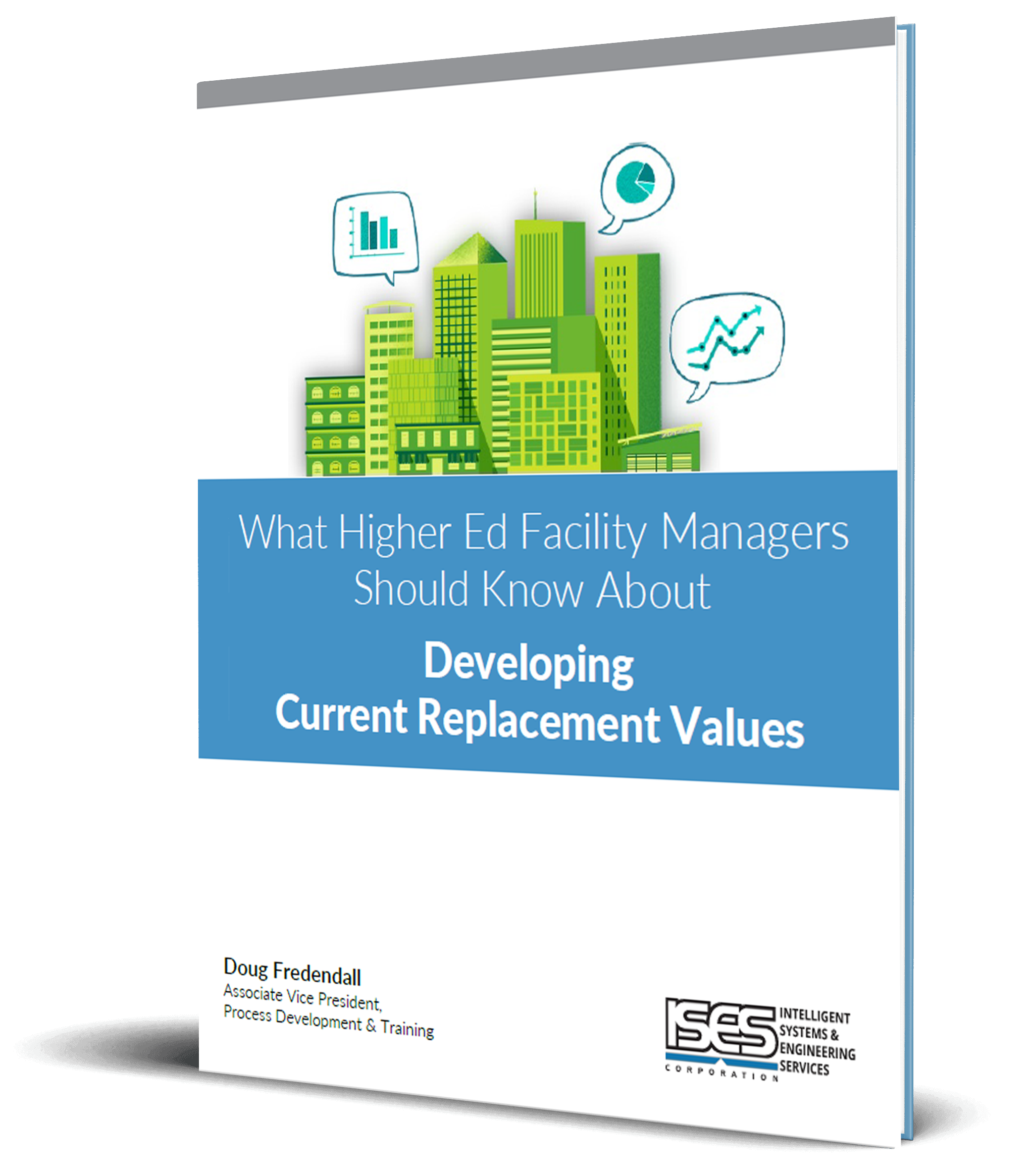Volume 1: Exterior Facades and Site Components
Prestigious and influential design accolades are often awarded for handsome and sustainable building designs. Maintainability awards, on the other hand, are rare – if they exist at all. Building designers are not incented to consider the cost to maintain a facility over its life, be it 20 or 200 years. But it would certainly help their clients if designers were to consider not only the beauty, function, and LEED points of the design, but also the Expected Useful Life (EUL) and the Total Cost of Ownership (TCO) of a facility. Same goes for facility managers when replacing building components. Specifying the right components and materials has a huge impact on EUL and TCO.
This is the first in a series of blogposts that discusses some of the pros and cons of designs that impact the lifecycle of a building’s components and the strain they may place on an already underfunded maintenance budget. Although the cost of some of these items amounts to a negligible percentage of the building's total price tag, it's the maintenance cost of these items that can become a significant percentage of the facility manager’s annual maintenance budget.
Exterior Facades
First and foremost, a building's exterior should be designed to withstand local conditions. Select a long-lasting material that requires the least amount of maintenance.
Metal panels
Keeping metal panels pristine levies a huge additional burden on maintenance budgets. They all require regular washing, especially white or light-colored panels which yield best results when laboriously cleaned by hand. Most facilities management departments don't have funding to clean the windows, never mind metal cladding. The reality is that they won't get regularly cleaned, if ever at all. As a result, these buildings often look neglected and much older than they age.
EIFS
This wall cladding system is another maintenance nightmare. Light colors are prone to show dirt and grime, especially in areas with poor air quality. Custom cleaning methods and recoating may be the only option to restore the finish. In addition, panels are easily damaged and subject to water infiltration. It's possible to patch EIFS, but work must be performed by specialized vendors. Then, of course, the patches are often so obvious that the whole panel requires recoating.
Corrugated metal panels
Dust and dirt tend to collect on the horizontal metal corrugations, inevitably leaving behind drip stains after it rains. Metal wall panels (exterior and interior) are great at trapping dust and dirt, thus necessitating ongoing attention.
Site Components
Material type and installation methods are two big factors that affect the EUL and TCO of many site components.
Exterior handrails and guardrails
The most common handrail applications are painted metal or galvanized rails, unpainted galvanized rails and stainless steel.
Stainless steel rails are initially expensive but hold up to the elements well. They're low maintenance, shouldn't require refinishing and typically have long EULs. Make sure to select the correct type, especially in harsh climates.
Painted steel or galvanized rails, on the other hand, will need to be continually repainted over the years. The paint often peels and chips. Jewelry (especially rings) and skateboards constantly wreak havoc on these surfaces. Unpainted galvanized rails are a better solution, as long as they're manufactured properly and installed correctly.
Galvanized paint is typically used at the welded joints and connections. These areas are first to show rust. Ensure that the entire rail is hot-dip galvanized after fabrication. The holes often seen on the underside of the rails should be filled with metal filler to negate moisture entry into the finished posts and rails.
Rail installation usually occurs after the main concrete structural elements are completed. For concrete ramps or walks, the vertical stanchion pockets should be cored prior to installation. The handrail posts are then grouted into the holes using non-shrink grout. ISES assessors often see applications where the grout has settled and formed water pockets. The posts begin to rust and, in some cases, the vertical block walls and concrete break off due to expansion. Make sure the grout around the posts is installed so that water flows away from them.
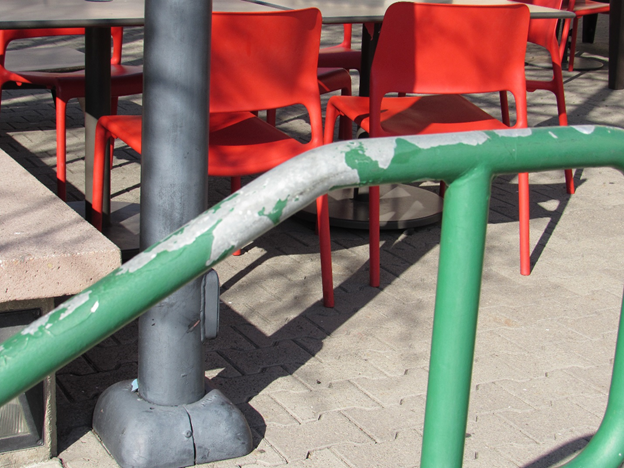
Leaving this galvanized handrail unpainted would have saved money initially and eliminated the need to repaint annually.

Rail posts that are incorrectly installed will rust and form water pockets, then cause concrete to break off.
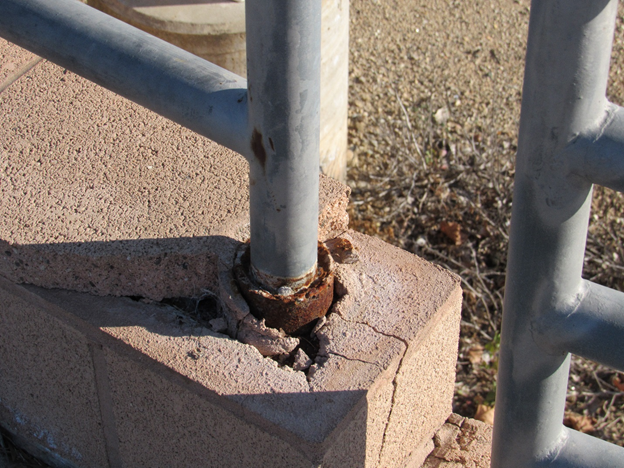
Handrail pockets that are not set correctly, get water buildup that cracks the concrete blocks as rust expands.
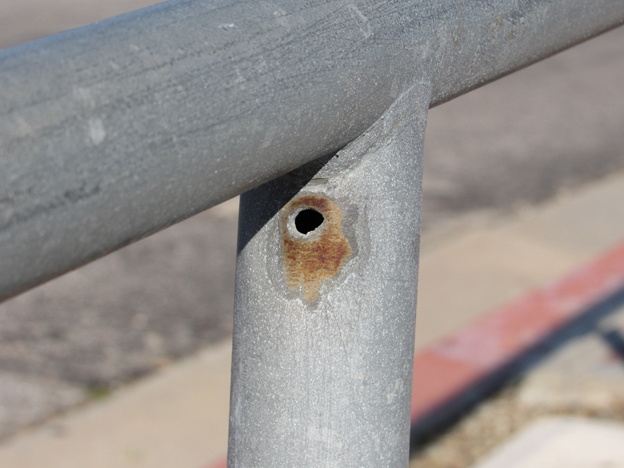
When holes from the hot-dip galvanizing are not filled, water enters the hollow tubes and causes rust.
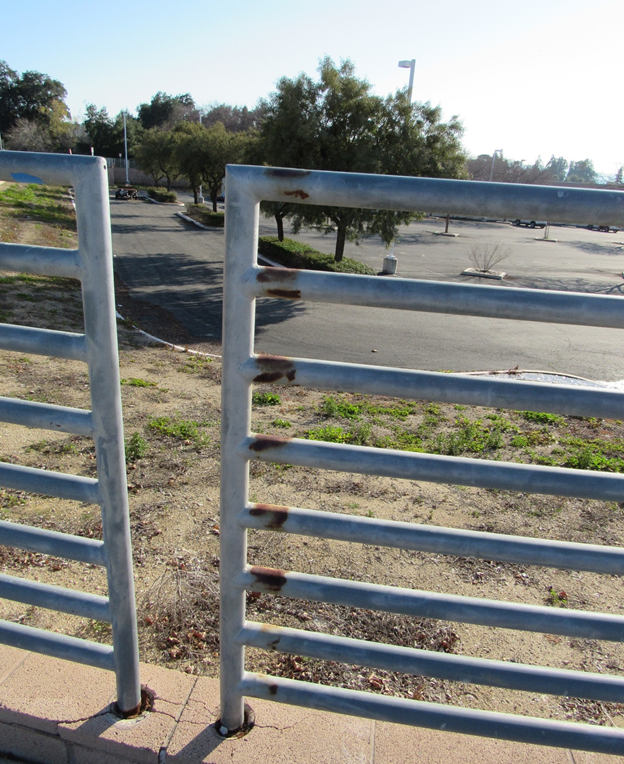
The cored holes for these field-fabricated rails and posts weren't filled correctly, allowing water to collect and generate rust.
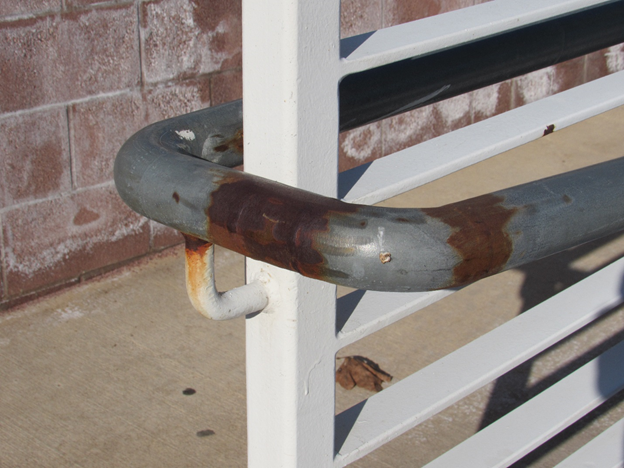
This galvanized railing was fabricated in the field and coated with a galvanized spray, rather than hot-dipped leaving an unsightly finish.
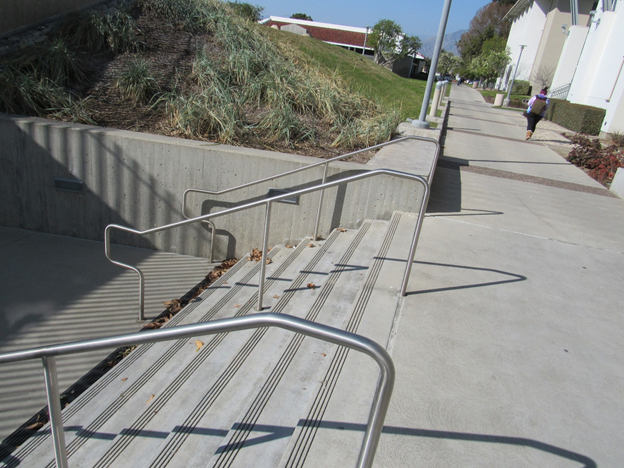
High-quality, stainless steel, maintenance-free railings are definitely worth the initial expense.
The next blog in this series focuses on recommendations for Exterior Doors and Roofing Systems.


